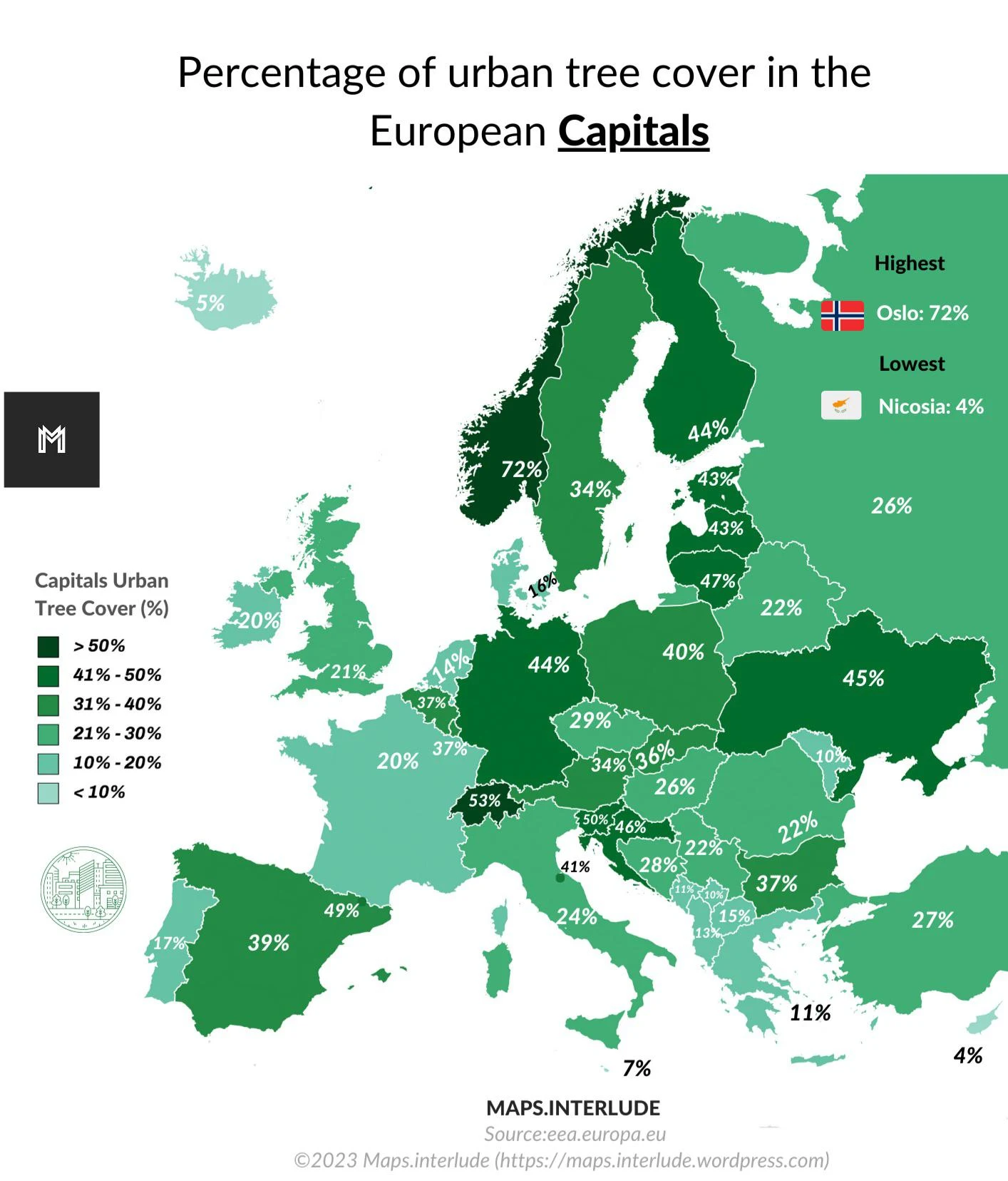The European country with the capital city that has the highest percentage of urban tree cover is Norway with its capital city Oslo.
Oslo, the capital of Norway, has the largest number of trees and may be considered the greenest capital in Europe. However, Oslo is known for its strong commitment to environmental sustainability and has implemented various initiatives to increase green spaces and promote a greener lifestyle.
Oslo had a comprehensive tree planting program and has set a goal to plant 100,000 new trees within the city by 2021. The city also has a focus on reducing carbon emissions and improving air quality, with plans to become carbon neutral by 2030. Oslo has invested in public transportation, pedestrian and cycling infrastructure, and has restricted car access in certain areas of the city center to reduce pollution and promote sustainable transportation.
Furthermore, Oslo has several large parks and recreational areas, such as the famous Vigeland Park and the nearby Nordmarka forest, which provide ample green spaces for its residents and visitors to enjoy. These efforts, among others, have earned Oslo recognition as an environmentally friendly city and a leader in sustainable urban development. However, it's important to note that rankings and designations for the "greenest" or "most environmentally friendly" city can vary depending on criteria and methodologies used by different sources.

This post may contain affiliate links. As an Amazon Associate, I earn from qualifying purchases.
Comments
Post a Comment